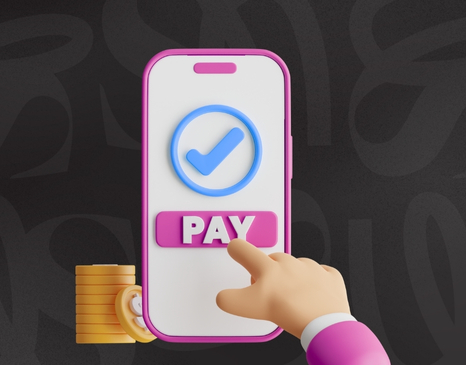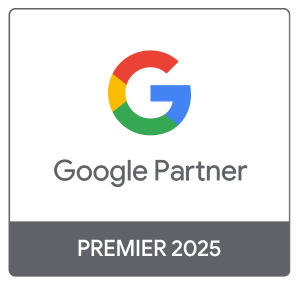Search engine optimization has been the focus of so many small business’ marketing strategies over the last few years, and for good reason. SEO is an awesome way to get more eyes on your practice without necessarily having to advertise. But SEO relies on Google’s search algorithms which change all the time. If you don’t have a dedicated SEO firm or consultant keeping your website up-to-date, it can be really tricky to stay on top of best practices.
One alternative, or better yet, a avenue to complement SEO efforts is paid advertising, which lots of practices shy away from because they worry it’s not the best use of their money. That’s where pay-per-click advertising comes in.
What is Pay-Per-Click Advertising?
Pay-per-click (or PPC) ads are really exactly what they sound like. No matter how many people see your ads, you only pay for each interaction. Rather than being charged for impressions (the number of times your ad appears on a user’s screen) you’re charged each time a user clicks on your ad.
Organic Search vs. Paid Ads
The main difference between organic search and paid ads for dentists lies in how visibility is achieved on search engines.
Organic search refers to earning a spot in search results naturally through search engine optimization. This is done by creating valuable content, optimizing website structure, and building credibility over time. It’s cost-effective in the long run but requires consistent effort and patience to see results.
Paid ads, on the other hand, involve paying for placement to instantly appear at the top of search results or targeted feeds. While paid ads offer quick visibility and control over targeting specific audiences, they require continuous investment to maintain exposure.
Ideally, successful dental marketing strategies combine both for sustained growth and immediate reach.

Types of PPC Advertising
There’s more than one type of PPC ad. Each type of PPC campaign serves a different purpose. The PPC campaigns that might work best for an independent dental practice include search, social media, and remarketing.
Search
When you search something on Google, the very first listing at the top of the page usually looks similar to all the other listings; the visible difference is a small green box that says “ad.” These are search ads.
Search ads show up when a web user looks for products or services that your practice offers. This placement matters, because it means you’re targeting qualified users; potential patients who are already looking for something similar to what you have to offer.
Social Media
We spend roughly 30% of our time online catching up with various social media platforms. That’s a significant chunk of time and attention that you could leverage for your business’ growth. Web users have come to expect ads as part of their social media experience, and I’d definitely recommend that you take advantage of that.
You can purchase actual ads on social media platforms like Facebook and Instagram, or you can make a normal post from your business account and then pay to “boost” or “sponsor” it. This basically means that whatever platform you’re using will show it to more people; both your followers and people who haven’t previously connected with you.
It’s worth noting that organic social media content no longer has a whole lot of value in terms of advertising. Facebook recently updated their algorithm to put more of a focus on paid content, which means that your organic (or unsponsored/ unpaid posts) are very unlikely to show up in anyone’s timeline.
Even if a user follows your business on Facebook or Instagram, chances are exceptionally slim that your unsponsored content will make an impression on their news feed. Depending on your follower count, only about 2%-6.5% of your online audience is seeing your unpaid social media posts.
Remarketing
Let’s say you’re looking at a lamp on Amazon. You spend some time thinking about it, add it to your wishlist, and maybe even put it in your cart. But eventually, you talk yourself out of it and move on. Suddenly, everywhere you go, you’re seeing ads for that lamp and other similar items. That’s called remarketing, and it’s a popular type of PPC campaign.
When a user comes to your site but doesn’t decide to take action (for example, request an appointment) you haven’t necessarily lost them forever. Remarketing PPC ads sort of tag that user when they leave your site without doing what you want them to. Then, the PPC ads start appearing on all sorts of sites that user visits, giving them the opportunity to come back and complete the action they didn’t finish the first time around.

Benefits of PPC Ads
Guaranteed Results
You don’t want to pay for something that doesn’t work. That’s only fair, and we’re with you on that. The beauty of PPC ads is that you only pay when they work. It’s almost like ordering high-quality invitations to your birthday party, except you only pay for the invitation if the recipient RSVPs as “attending.”
There’s really no downside here. You only pay for the clicks you get, not the clicks you hope you get.
Google Algorithms Don’t Impact PPC
SEO best practices are based on Google’s search algorithms to help websites rank higher organically in a Google search. Following the most current SEO best practices is a great way to get eyes on your business; the only potential caveat to that is the fact that these best practices change regularly.
Google is always trying to help web users get the best possible search experience, which is why they update their search algorithms so often. Frequent algorithmic changes mean that the little things that keep you at the top of the search results one day can have no positive impact on your ranking the next. Of course, you can make adjustments to bolster your rankings according to the latest update, but that does take some time.
PPC ads aren’t impacted by Google’s algorithm changes; you pay for the placement you have, which gives your ad priority over organic rankings. So even if your website falls to the second or third search page after an update, your PPC ads will remain firmly in place.
Immediate Exposure
It’s going to seem like I’m ragging on SEO a lot here. I’m not. SEO is a super important part of an effective marketing strategy. Having said that, there are some benefits that PPC ads have over high organic search rankings through SEO, which is why your strategy needs to include both.
One of the advantages PPC advertising has over organic SEO rankings is immediacy. It takes time to climb to the front page of a search, and even longer to get to the third, second, or first position on that page. But once you’ve set up your PPC campaign, your ads start showing right away, shedding immediate light on your practice.
Another Chance to Grab the User’s Attention
You only get one chance to make a first impression. But that doesn’t mean you can’t convince users to choose your practice after that impression has already been made.
Remarketing campaigns help you stay at the top of a potential patient’s mind after they’ve already visited you. You can use the opportunity to highlight the products or services they might be interested in, and make it super easy for them to follow up.
Make the Most of Your Dental Marketing Strategy
Balancing SEO and PPC advertising is the key to building a strong, sustainable online presence for your dental practice. While SEO helps you earn long-term credibility and organic visibility, PPC delivers immediate exposure and measurable results that drive new patient inquiries right away. Together, they create a powerful marketing strategy that keeps your practice competitive and visible—no matter how search algorithms evolve.
If you’re ready to elevate your dental marketing strategy with a custom blend of SEO and PPC campaigns, SmileShop Dental Marketing can help. Our team specializes in helping dental practices attract, convert, and retain more patients through proven digital marketing strategies. Contact SmileShop today to schedule a free consultation and start turning clicks into appointments!






